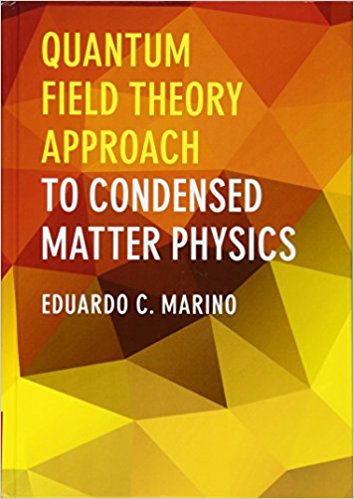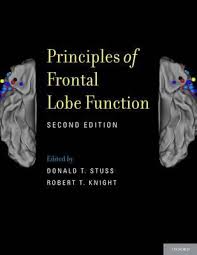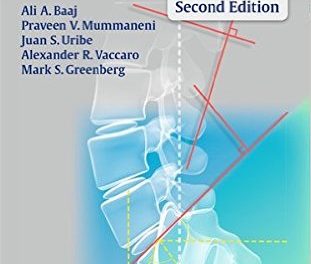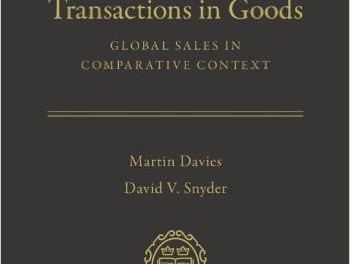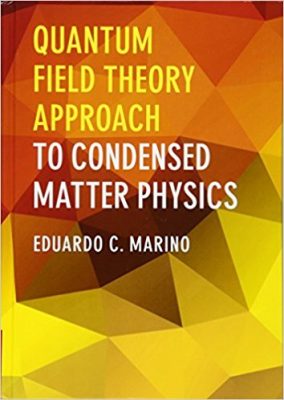 Author: Eduardo C. Marino
Author: Eduardo C. Marino
Publisher: Cambridge University Press – 516 pages
Book Review by: Venkat Subramaniam
Quantum field theory (QFT) had its birth in 1905 when Albert Einstein, studying the work of the German theoretical physicist Max Planck (who discovered energy quanta that won him the 1918 Nobel Prize in Physics) began to discuss the quantization the electromagnetic radiation field in terms of photons to explain the photoelectric effect.
Einstein then made the first application in 2007 of QFT in the area of condensed matter physics (CMP). He extended the idea of quantization to the field of elastic vibrations of a crystal, by using the concept of phonons in order to obtain a successful description of the specific heat of solids. This was one of Einstein’s first great achievements in quantum theory. The author, physics professor Eduardo C. Marino writes: “since their early days therefore, we see that CMP and QFT have been evolving together side by side.”
The development of new knowledge in quantum field theory as well as in condensed matter physics has been growing at a brisk pace in recent decades. Each of these two areas of study has benefitted from the other’s advances in research and discoveries finding solutions and answers to pending problems and questions common to quantum field theory and condensed matter physics.
Marino provides a bold new, unified view of these two related subjects in physics in this book. Mucio Amado Constantino of the Centro Brasilero de Pasquissas Fisicas writes that this book “is an important step in this direction and it is bold in its outlook as it deals with problems that have no consensual solution in the scientific community…his approach leads to powerful grasp of the mathematical tools and a solid knowledge of the most valuable actual problems in condensed matter physics.”
Professor Mariano covers many aspects of inquiry, with a wide range of introductory and advanced topics in quantum field theory and condensed matter physics through the 30 chapters that constitute this wide-ranging book. We list them below to give you a bird’s eye view:
- Part I. Condensed Matter Physics
- Independent Electrons and Statistic Crystals
- Vibrating Crystals
- Interacting Electrons
- Interactions in Action
- Part II. Quantum Field Theory
- Functional Formulation of Quantum Field Theory
- Quantum Fields in Action
- Symmetries: Explicit or Secret
- Classical Topological Excitations
- Quantum Topological Excitations
- Duality, Bosonization and Generalized Statistics
- Statistical Transmutation
- Pseudo Quantum Electrodynamics
- Part III. Quantum Field Theory Approach to Condensed Matter Systems
- Quantum Field Theory Methods in Condensed Matter
- Metals, Fermi Liquids. Mott and Anderson Insulators
- The Dynamics of Polarons
- Polyacetylene
- The Kondo Effect
- Quantum Magnets in 1D: Fermionization, Bosonization, Cuolomb Gases and “All That”
- Quantum Magnets in 2D: Nonlinear Sigma Model, CP and “All That”
- The Spin-Fermion System: A Quantum Field Theory Approach
- The Spin Glass
- Quantum Field Theory Approach to Superfluidity
- Quantum Field Theory Approach to Superconductivity
- The Cuprate High-Temperature Superconductors
- The Pnictidcs: Iron-Based Superconductors
- The Quantum Hall Effect
- Graphene
- Silicone and Transition Model Dichalogenides
- Topological Insulators
- Non-Abelian Statistics and Quantum Computation
Mariano writes that QFT and CMP are two of the most significant areas of physics. QFT which “grew up” mainly in the study of particle physics, is one of the most successful and accurate theories in physics, exhibiting some theoretical predictions that can match experimental results up to twelve decimal figures!
And CMP has proven to be one of the richest areas in physics that has led to countless technological products that have improved human life. One of these is the development f the transistor. As a matter of fact, Mariano points out, the whole revolution of electronics, miniaturization, and informatics would not have been possible without the development of condensed matter physics.
Author:
Eduardo C. Marino is Professor of Physics at the Federal University of Rio de Janeiro. He was Postdoctoral Fellow at Harvard University and a Visiting Professor at Princeton University. He is an elected member of the Brazilian Academy of Sciences and in 2005 was awarded the National Order of Scientific Merit by the president of Brazil.

